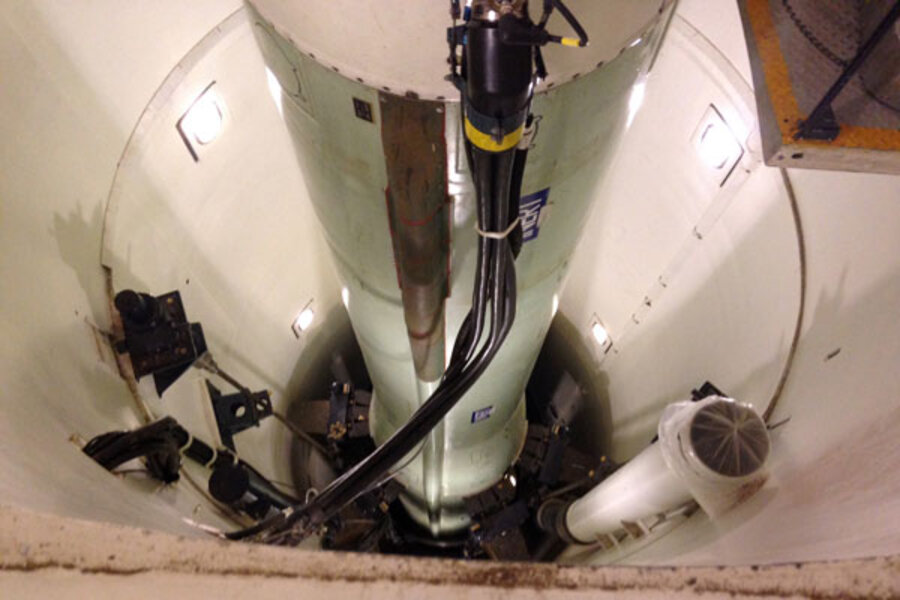New test could hint at nuclear weapons inspections of the future
Loading...
Researchers in the US and Britain say they have devised a simplified way to verify reductions in nuclear warheads that would meet the need of future arms control agreements while at the same time keeping information about a warhead's design secret.
The prospect for leaks of classified weapon-design information has been a concern within the arms-control community as it weighs different technological approaches to verifying whether a warhead is the real deal without opening it up. No country wants to reveal their designs to potential adversaries or to those who might sell the information to the highest bidder.
Researchers from Princeton University and Microsoft Research, based in Cambridge, Mass., propose taking a page from the computer-security community by comparing measurements from a warhead an inspector randomly selects with similar measurements from warheads an inspector wants to verify as the real deal.
In the process, no information relevant to weapon design finds its way into an inspector's hand. The only information an inspector sees is match or no match between the warhead being verified and the "template" warhead. No match? That's when, in effect, one country calls the other's bluff. It's known as the zero-knowledge protocol.
"The day the Russians say: We're going to dismantle 500 warheads, this is the day you really want to be sure that whatever they declare, these are authentic warheads, and they're not somehow moving the real ones to a different location," says Alexander Glaser, an assistant professor of mechanical and aerospace engineering at Princeton University in New Jersey, and the lead author of a study setting out the approach. The results appear in this week's issue of the journal Nature.
Currently, nuclear arms agreements between the US and Russia involve reducing the number of strategic weapons that each country deploys. The easiest way to verify that is to count bombers, land-based missile silos, or ballistic-missile submarines, the researchers say.
But when a missile is scrapped, its warheads typically are stored, notes Hans Kristensen, director of the Federation of American Scientists' nuclear information project. At some point, they become too expensive to store, so some eventually are dismantled. But no strategic-arms treaty at the moment requires either country to destroy the warheads they no longer deploy.
Current frosty relations between the US and Russia, as well as between President Obama and congressional Republicans, preclude reaching a warhead-destroying agreement anytime soon. But that type of agreement will emerge at some point, suggests James Acton, a senior associate in the Carnegie Endowment for International Peace's Nuclear Policy Program. It's wise to have one's verification approaches in order before such talks might begin, he writes in a commentary that accompanies the study by Dr. Glaser and colleagues.
"It's a very interesting and promising approach," says Mr. Kristensen.
The technique involves sending a beam of high-energy neutrons into the template warhead and measuring the amount and properties of the neutrons that pass through it. The information is loaded into detectors set up to verify the authenticity of additional warheads. When the additional warheads are subjected to the same neutron beams, the neutron signatures are compared with the template's.
At this point, the team has used the approach on a test target and modeled the results, which indicate the approach will work. The next steps involve setting up a larger-scale demonstration program, Glaser says. This includes working on approaches that will reduce the likelihood that the system can be scammed or that could lead to errors in the measurements.
"My hope is that within a year, we might be able to invite folks in and really show them" the approach's potential, Glaser says.






